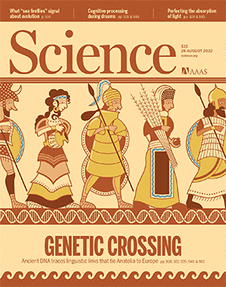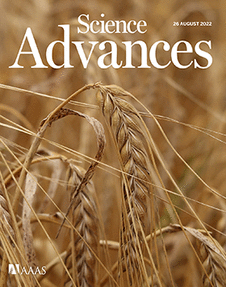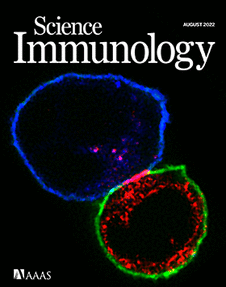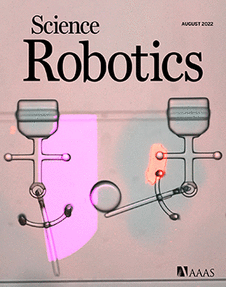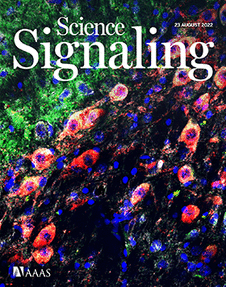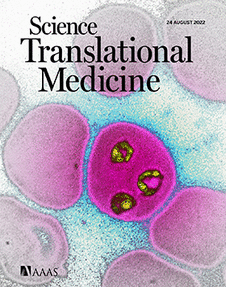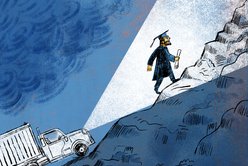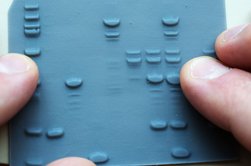How 3D printing could help blind researchers ‘see’ data
When postdoc Matthew Guberman-Pfeffer wants to read a journal article, he has to run through an obstacle course of potential problems. First, the Yale University physical chemist downloads the PDF and copies it into a separate text file. Then, he uses a screen reader to read each sentence aloud, going slowly because the reader often doesn’t recognize complicated scientific terms. Sometimes the column formatting doesn’t copy over correctly and the reader ends up dictating a jumbled mess. Sometimes it includes every single reference number; sometimes it stops midsentence to read out an advertisement.
But the biggest struggle is always the figures. There’s nothing a text reader can do to help him visualize them. He has some vision, so by magnifying a graph or diagram up to 1000% he can see one tiny fragment of the visual at a time, eventually piecing together a patchwork picture in a process he compares to the story of the blind men and the elephant. But usually it isn’t worth the effort, and he hopes whatever text description the authors gave of the figure is enough.
All that might be about to change. In collaboration with sighted Baylor University biochemist Bryan Shaw and his team, Guberman-Pfeffer and fellow optically impaired scientists have developed an easy way to convey visual data by 3D printing them in minutes, they report today in a paper published in Science Advances. This is Shaw’s latest step toward a mission of helping those like his science-loving son, who was born with tumors in both of his eyes, “see” science’s stunning imagery.
Science Careers spoke with three of the paper’s authors—Guberman-Pfeffer, Shaw, and Northeastern University chemistry and bioengineering faculty member Mona Minkara, who is blind—about how the technology could make science more inclusive. The interview was edited for clarity and brevity.
Q: How did you all come together to be a part of this study?
Matthew Guberman-Pfeffer: I was talking to Hoby Wedler, another of the blind chemists on the paper, and he says, “There’s this guy who’s doing great work in terms of making science accessible, making stuff tactile, so maybe you should look him up.” That was right before the gummy bear paper came out last year. I connected with Bryan, and it’s been great ever since.
Bryan Shaw: We had this paper last year in Science Advances with little models that you can put in your mouth and visualize tactically with your tongue and it’s actually a better tactile sensor than your fingers. That was the first paper I ever did in this [field of tactile visualizing], and it got all the blind people with Ph.D.s in chemistry interested. Everyone on this paper teamed up after my lab published the last paper and now we’re a team for all future papers! [laughter]
Mona Minkara: I was sitting one day in my office, doing my thing. And then I get an email from Bryan. And he was like, “Hi, I’m doing stuff to make chemistry accessible to folks, and would you like to collaborate?” We get on a Zoom call, he tells me his whole spiel. I’m like, “I’d love to be part of this.”
Q: Your new research focuses on lithophanes. But they’re usually used as art right?
B.S.: You could call them very, very thin, translucent engravings. When you hold them up to the light, the thicker regions scatter light and appear darker and the thinner regions don’t scatter as much light and appear lighter. So you end up seeing something that looks like a backlit painting or photograph. Some people think they were made in sixth or seventh century China during the Tang Dynasty from really thin porcelain or maybe wax, but they really took off in Europe in the 1820s. And now it’s 3D printing. Kids make them for lampshades and all sorts of neat little things.
M.G.P.: So Bryan, I have a question. How did you first hear about lithophanes?
Q: Oh, so you’re going to ask my questions now? [laughter]
B.S.: A student and I were playing around making 3D-printed graphics. I said, “Hey, make them thinner, they’ll print quicker and we’ll use less resin.” Then he made them like potato chips. I took one, and then I held it up to the light, and I was like, “Oh my gosh, it’s like a picture.” So for like a week I thought we had invented the lithophane. And then I slowly found out it was invented over 1000 years ago. [laughs] But it’s never been used to make 2D imagery accessible to people with blindness that we know of in a formal way.
M.M.: That’s what’s innovative here, using this preexisting technology to make chemistry accessible to us blind people. It makes you wonder what else is out there that can be used to make things accessible. It’s not expensive to make something accessible, we just have to be innovative.
M.G.P.: So much of science is taking old ideas or old stuff and reuniting it in new ways. I mean, that’s what we do with chemistry, right? Atoms have always been here. We assemble them in new ways to see new products. It’s really cool to connect this old technology or artwork to the accessibility challenge.
B.S.: The cool thing here is the way that light scattering works with this particular resin, whatever I can see when I hold up the lithophane to the light, they can feel. So we can sit around and share the exact same piece of data and talk about it. It’s a type of universal visualization.
Q: What makes you most excited about this innovation?
M.M.: It could revolutionize how I connect with my students. My students are not blind, but I am. If I can get a lithophane system, then they can just print out their data for me and we can be talking about the same piece of information at the same time. That’s what got me excited personally.
M.G.P.: When I was a student it was a translation problem for me to communicate with the professor. There were diagrams constantly drawn on the board, but I had no idea what she was drawing. It was like a Vaudeville act: One person’s blindfolded and the other person is holding up an object, describing it in a way that hopefully the blindfolded person will tell what it is. But if she knows what diagrams she’s going to do before a presentation and prints a lithophane, problem solved. You don’t need a $50,000 or $100,000 Braille book where an expert transcriptionist has to make tactile graphics by hand.
B.S.: $3500 is what our 3D printer cost. And that’s the top of the line.
Q: What needs to happen next?
M.M.: It would be really nice for us blind people to be able to create these lithophanes ourselves, to make sure that the software that’s being used to create the lithophanes is accessible. This process also really needs to be incorporated into the mainstream classroom. It doesn’t need to be just lithophanes for blind people; it’s lithophanes for everyone. So then it becomes basic for the data to be universally accessible.
B.S.: For Mona and Matthew and anyone else to print whatever they want—download a paper, and boom! The images print out like a deck of cards.
M.G.P.: That would revolutionize everything.
Q: What do you hope will be different for budding blind and optically impaired scientists from it was when you started?
M.G.P.: When I was an undergrad, I started as a humanities political science major, partly out of some interest, but also because I was told how impossible science would be for me as a blind person, both from professionals in the respective departments and disability coordinators for the state. Ultimately, I did have to take a lab course, I chose chemistry, and as I like to say I bonded with the subject matter; my love for it was so great that I could stubbornly find ways to tunnel through the barrier. If we can lower that barrier, it’s more likely for people like me or people who have even less vision to get over it and make contributions to chemistry. I hope people can say not, “Oh, there’s no way you can do this as a blind person,” but “Yes, there are ways, let’s use them. Let’s build upon them. Let’s tinker and see what works for you.”
Q: What has been the most rewarding part of your work?
B.S.: For me, it’s meeting the people. When I saw Hoby and Matthew and Mona and [co-author] Cary [Supalo] visualize data for the first time, that was awesome.
M.G.P.: It’s not just data. Like this one—[holds up lithophane of a butterfly wing to the light]—there is no way in heck I could ever see a butterfly wing. And yet here you made a tactile of a butterfly wing and I was able to measure the width and length. That was a crazy experience. You’re giving a form of sight to a whole bunch of people. That’s pretty cool.
